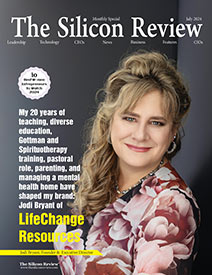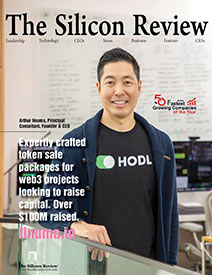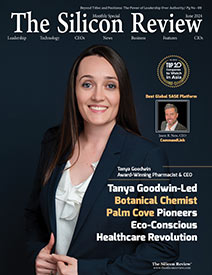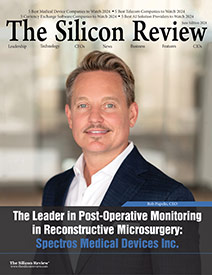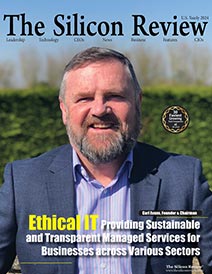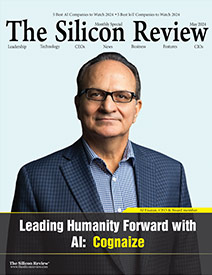50 Best Companies to Watch 2021
“We have entered a new era of consumerism where authenticity and trust will hold the greatest currency.” Trevelino/Keller
The Silicon Review
![]() Authenticity and trust cannot be ideated, art directed and marketed socially and digitally. There must be legitimacy behind the brand, its products and services. While buyers have gravitated toward brand eye candy in the past, reputation will be the driving currency. That reputation, however, will come more often from trusted media sources rather than social media friends, friends of friends or media-like brands that have been created overnight by uncredentialed media.
Authenticity and trust cannot be ideated, art directed and marketed socially and digitally. There must be legitimacy behind the brand, its products and services. While buyers have gravitated toward brand eye candy in the past, reputation will be the driving currency. That reputation, however, will come more often from trusted media sources rather than social media friends, friends of friends or media-like brands that have been created overnight by uncredentialed media.
We have witnessed a new level of skepticism and filtering that’s redefining the buyer’s psyche. This environment will be particularly hard on new brands that lack credible third-party attribution. With that said, marketing has not and will not lose its purpose. But we will see it lean in more on reputation. If Forbes says a brand is promising, or an analyst firm like Gartner features a company in its quarterly report, you can bet the brand will integrate that reputation into its marketing. Car manufacturers and wireless carriers have been doing this for years with third parties like JD Powers, maybe too aggressively. It must carry a degree of thoughtfulness and balance if it’s going to hold the credibility of what Trevelino/Keller calls reputation marketing. 360 Reputation Marketing, which we also introduced in 2019, challenges us to think as broadly as we can in terms of media and channels with which to disseminate the message.
For these reasons, our business has grown across public relations, integrated marketing and creative services. And it’s not simply offering the capabilities in these three areas, but rather leading with reputation, then marketing vs seeing reputation and public relations as an isolated strategy to protect the brand.
In conversation with Owners of Trevelino/Keller, Dean Trevelino and Genna Keller
Q. PR is highly effective when it is purposeful and relevant. How flexible are your services for customization?
Each program we develop for a client has a high degree of customization, either by the audience, strategy, scale, or campaign idea. Our intent – minimize the challenges, optimize the opportunities and maximize the resources. From there, we build a customized playbook, relying on best practices, key learnings and insight into the current environment to accelerate and pivot as we go.
Q. It is quite difficult to achieve success in every PR campaign that is developed. What are some best practices to overcome failures?
Granted, some campaigns are more challenging than others. How competitive is the product or service, which determines how newsworthy the company is in general? A company late to the game with no differentiation in the market is a difficult sell, and we would argue, should not necessarily consider public relations as the lead strategy. They may be better served to consider a content marketing or paid digital strategy, programs that can level the playing field against better competition. If we feel like the brand is strong, believe its products or services are compelling, and it brings something fresh to the market, then we have no excuse for not being successful. However, it’s important to note that sometimes companies lack the patience necessary to realize success. A smart agency will set that expectation, that simple idea of “not if, but when.”
Q. How do you understand the culture of the company before devising a PR campaign?
Culture is important in terms of understanding the tone with which a company’s marketing should align. A conservative brand’s marketing should not take on an irreverent identity, for example. However, a successful company knows that as much as its culture is important, its products and services must resonate with its core customer. For some companies, culture aligns with brand, which aligns with customer. For other companies, culture does not always align naturally with customer personas, and so the agency must be thoughtful in how it balances the two. As far as understanding the culture, that’s simply a deep discovery dive into history, leadership, core values and governance.
Q. How do you set expectations for companies in terms of the timeliness of results and impact on the business?
First, it’s important to establish the purpose and potential of each strategy. Long ago, we began explaining to clients that a public relations-only program can only indirectly yield financial results. We cannot set the expectation that after a year of a public relations program, your sales will increase 5, 10, or 20 percent. However, public relations can yield the kind of results that establish or elevate a brand’s reputation. And it’s that reputation that creates buyer confidence, B2B or B2C. Additionally, while some public relations results can be achieved quickly, it is a slower moving strategy because you are at the discretion of media, trends, and distractions in the market like pandemics or political calamity, things that consume media attention regardless of their typical beats. That’s where integrated marketing steps in because it can act quickly and efficiently if you know audiences extensively. It’s why we believe the most effective programs pair the reputation power of public relations with the targeted reach and access of integrated marketing. While we want to assume a client has a strong brand so we can move right into public relations and integrated marketing, we must make an assessment early on regarding the relevance of a brand’s name, identity, messaging, and web presence. Only then should we encourage the client to invest marketing dollars. Inexpensive research can clarify a brand’s prowess or weakness.
Q. Do you have any new services ready to be launched?
We are in an unprecedented business environment as it relates to the 98% of business, small business, that powers our economy. So it’s not random that we are launching T/K SmallBiz, a suite of creative services specifically designed for small businesses. In Q4 2020, we were awarded a contract with Invest Atlanta, a government-funded effort to support small businesses in response to COVID-19. As a result, we were able to provide creative services to more than 25 small businesses. That campaign shined a light on the gap that small businesses face in terms of smart, affordable, and bottom-line-oriented marketing support. Trevelino/Keller took key learnings from that effort, refined its offerings, and is launching T/K SmallBiz nationally.
![]()
Meet the founders behind the success of Trevelino/Keller
Dean Trevelino and Genna Keller began working together exactly three decades ago at Weber Shandwick before reconnecting seven years later at Ogilvy, where they would ride the dot-com phenomenon as technology and marketing executives before exiting to launch Trevelino/Keller in 2003. Their 23 years together have played a key role in their ability to create a firm with the industry’s number one retention. Where firms average 20-25% annual turnover, Trevelino/Keller has lost only two people to agencies in 18 years. Its executive leadership has an average tenure of 13 years. Their strategy to share vs divide every aspect of the firm’s business – client service, operations, marketing, business development and financial stewardship – has proven to be an effective formula for 18 consecutive years of profitability, some marked as one of the fast-growing firms in the country, as well as one of the 30 best firms to work for in North America and recently the front runner of the Top 10 Firms Handling the Pandemic.




